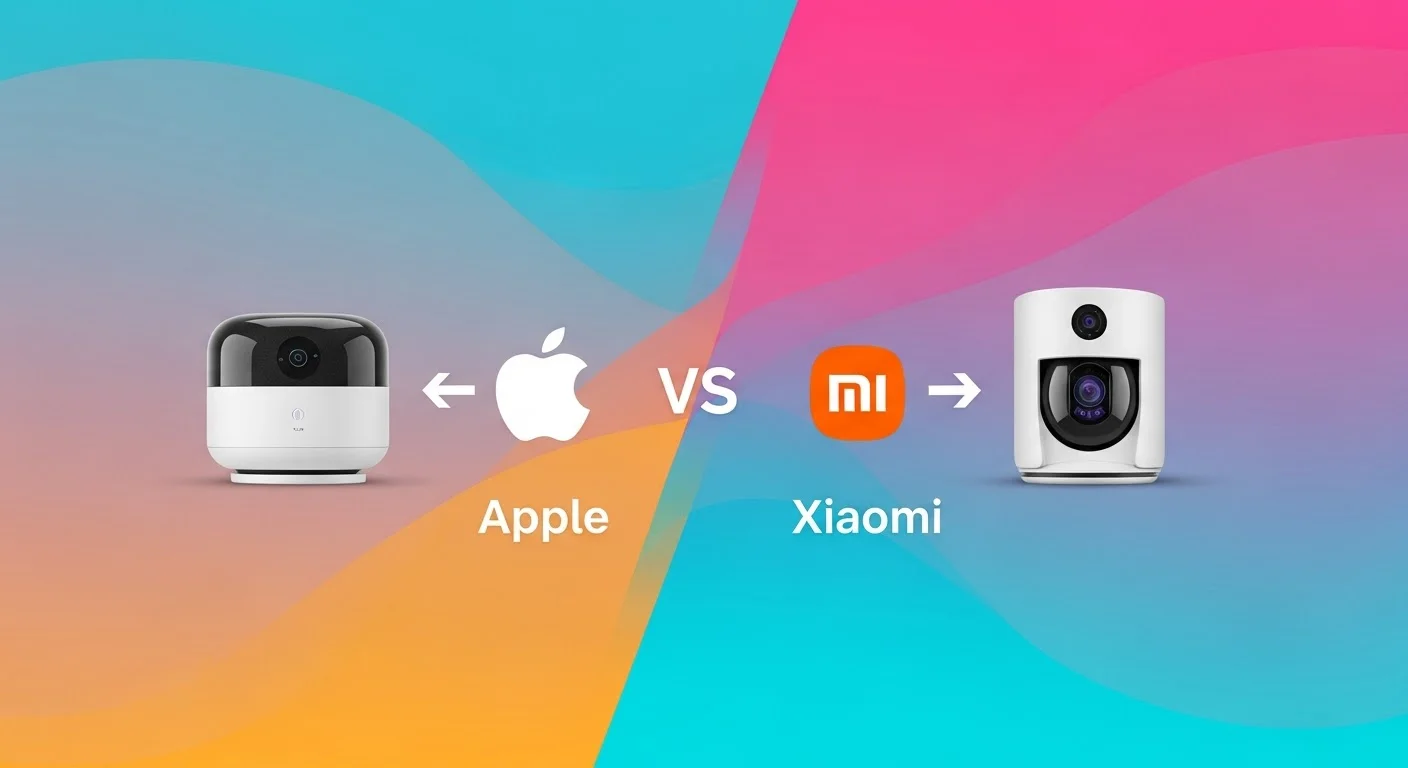Apple HomeKit vs Xiaomi Security 2025: Smart Home Showdown
Apple HomeKit vs. Xiaomi Security in 2025: Fortifying Your Smart Home
Hey there, tech enthusiasts and Xiaomi fans! If you’re thinking about beefing up your home security in 2025, you’re probably drowning in options. Picking the right smart home system can feel like a puzzle, especially with so many gadgets promising peace of mind. Here at xiaomiforall.com, we’re all about making Xiaomi tech (and its competitors!) crystal clear. So, let’s dive into a head-to-head comparison of Apple HomeKit and Xiaomi’s smart home security ecosystems to help you figure out which one’s got your back. We’ll explore the good, the bad, and the downright essential for a truly secure smart home upgrade.
Why Your Old-School Locks Just Don’t Cut It Anymore
Let’s face it, in our super-connected world of 2025, relying solely on a deadbolt and a basic alarm feels a bit like bringing a butter knife to a gunfight. Modern smart homes are integrating AI, remote monitoring, and automations that can actually react to threats in real-time. And it’s not just about stopping burglars. The global smart home security market is projected to hit a whopping $107.1 billion by 2033, and that’s driven by our desire for efficiency, privacy, and yes, serious security.
The beauty of “smart home security” is its interconnectedness. Devices using protocols like Matter can play nice together, AI can recognize faces or packages, and you get instant alerts. Plus, it’s about more than just intrusion detection; it’s about keeping an eye on the kids or pets, saving energy, and crucially, staying safe from rising cyber threats.
So, the big question for 2025: Will Apple HomeKit’s focus on privacy win the day, or will Xiaomi’s accessible and ever-expanding ecosystem give you the ultimate peace of mind? Let’s find out.

Deep Dive: The Secure Sanctuary of Apple HomeKit
Apple’s HomeKit is all about a closed-off, tightly controlled environment where privacy and end-to-end security are paramount. In 2025, HomeKit Secure Video (HSV) is a big player here. It lets you securely store camera recordings in iCloud, all encrypted. What’s neat is that it can recognize faces and packages without sending that sensitive data to third-party servers. You’ll need an iCloud+ subscription (starting around €0.99/month), but it integrates seamlessly with Siri. Imagine saying, “Siri, show me the front door camera,” and boom, there it is.
HomeKit’s Strengths: The Apple Ecosystem Advantage
The biggest win for HomeKit is its native integration with Apple devices. Cameras like the Aqara G3 or the Logitech Circle View boast crisp 2K resolution, excellent night vision, and spot-on motion detection. Systems like Abode or Vivint also connect beautifully through the Home app, letting you arm alarms, control door sensors, and even automate lights when motion is detected. Apple’s rumored 2025 AI-powered hub with a 6-inch screen and a potential built-in camera with HSV further cements this idea of a central, private control point. The key takeaway here is that your data pretty much stays within the Apple universe.
HomeKit’s Weaknesses: The Price of Privacy?
However, this “walled garden” approach means HomeKit isn’t as open when it comes to device selection compared to more expansive ecosystems. Sometimes, motion detection can get a bit confused in really complex scenarios, and you do need a hub like a HomePod or Apple TV running 24/7. The initial investment can also be pretty steep – think starting around €599 for a Vivint kit – and those ongoing iCloud subscriptions can add up. HomeKit is fantastic if you’re all-in on Apple and prioritize rock-solid security and privacy above all else.

Xiaomi’s Smart Security: Accessible and Expansive
On the other side of the ring, we have Xiaomi. Through its Mi Home app and its many sub-brands like Aqara, Xiaomi offers a smart home ecosystem that’s incredibly budget-friendly and vast. It’s a dream for those keeping an eye on their wallets in 2025. The Mi Home app is your central command for everything: cameras, sensors, smart locks, you name it. Plus, it’s packing AI smarts for detecting humans, pets, and even vehicles. Devices like the C500 camera with its 6MP resolution, Wi-Fi 6, and AI tracking, or the Aqara G410 with 2K and Matter compatibility, deliver great night vision and instant alerts.
Xiaomi’s Strengths: Value and Versatility
Xiaomi’s major selling points are its wallet-friendly prices (you can get a solid starter kit for under €500) and its broad compatibility. It plays nice with Google Assistant, Alexa, and importantly, Matter, making it super easy to expand your system down the line. For 2025, Xiaomi’s “Human x Car x Home” philosophy, integrating with EVs and wearables via HyperOS 2, opens up some really cool automation possibilities – like lights turning on automatically when motion is detected. Aqara hubs, like the M410, are also great for extending your network range and offer local storage options, reducing cloud reliance. And get this – some cameras, like the G510, even feature solar panels for a sustainable power boost!
Xiaomi’s Weaknesses: The Privacy Question Mark
The main concern often raised with Xiaomi revolves around privacy, largely due to its Chinese origins and potential reliance on external servers. While Matter support is definitely improving this, it’s still something to consider. Compared to Apple’s end-to-end encryption, Xiaomi has historically put less emphasis on it, though this is evolving. Some users also report that firmware updates can be a bit hit-or-miss in certain regions. If you want to integrate Xiaomi devices with HomeKit directly, you’ll typically need a workaround like HomeBridge, which can add a layer of complexity to the setup. Xiaomi is a fantastic choice if you’re looking for maximum bang for your buck and the flexibility to grow your system without breaking the bank.
Head-to-Head: Smart Home Security Showdown
| Feature | Apple HomeKit | Xiaomi/Aqara |
|---|---|---|
| Privacy | End-to-end encryption, data stored in iCloud. | Improving with Matter, but historical cybersecurity concerns exist. |
| Devices | Limited selection (e.g., Aqara G3, Eve sensors). | Wide range (e.g., C500, G410), very affordable. |
| AI & Automation | Facial recognition (HSV), Siri integration. | AI tracking, HyperOS integration. |
| Cost | High initial investment (€599+ kits, subscriptions). | Low initial investment (under €500 ecosystem). |
| Compatibility | Closed ecosystem, partial Matter support. | Open ecosystem, full Matter support. |
HomeKit really shines for Apple users who crave top-tier privacy, while Xiaomi offers incredible accessibility and a vast array of choices. In 2025, the adoption of Matter is a huge step forward for interoperability across both platforms, though Apple still leans towards its integrated ecosystem.
Making the Smart Choice for Your Secure Future
So, which one is right for you in 2025? If absolute privacy and seamless integration with your Apple devices are your top priorities, HomeKit is likely your best bet. If you’re looking for affordability, a massive selection of devices, and the flexibility to build out your system over time, Xiaomi is incredibly compelling.
Think about your current tech setup. If you’re rocking an iPhone, HomeKit offers a beautifully smooth experience. If you’re more of an Android person, Xiaomi’s Mi Home app is super versatile. In fact, in 2025, you might even consider a hybrid approach, using Matter to connect devices from both ecosystems.
Whatever you choose, always remember to keep your firmware updated – it’s your first line of defense against cyber threats. And if you’re unsure about installation, don’t hesitate to call in the pros. Securing your smart home today is the best way to ensure a worry-free tomorrow.
Source> Alles Xiaomi







